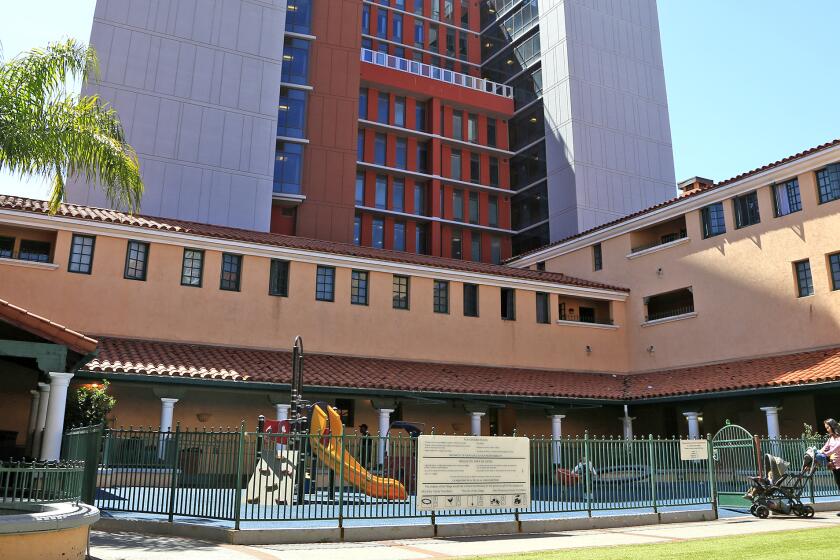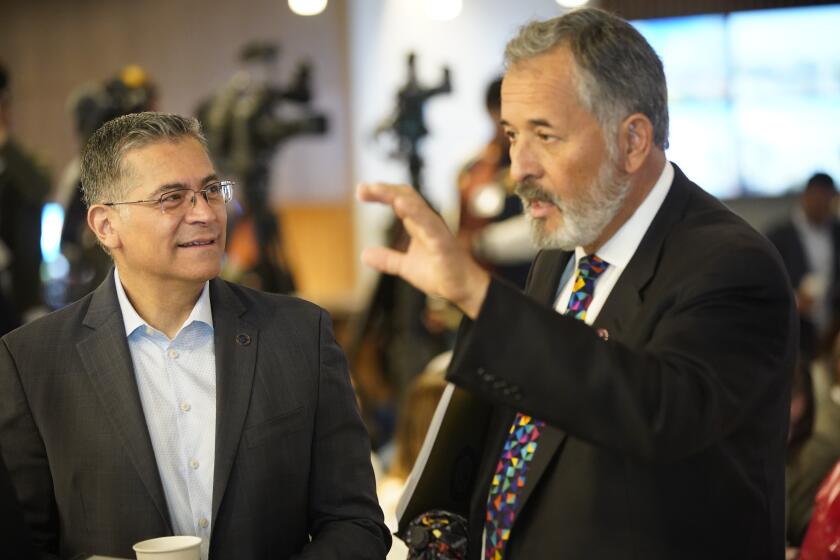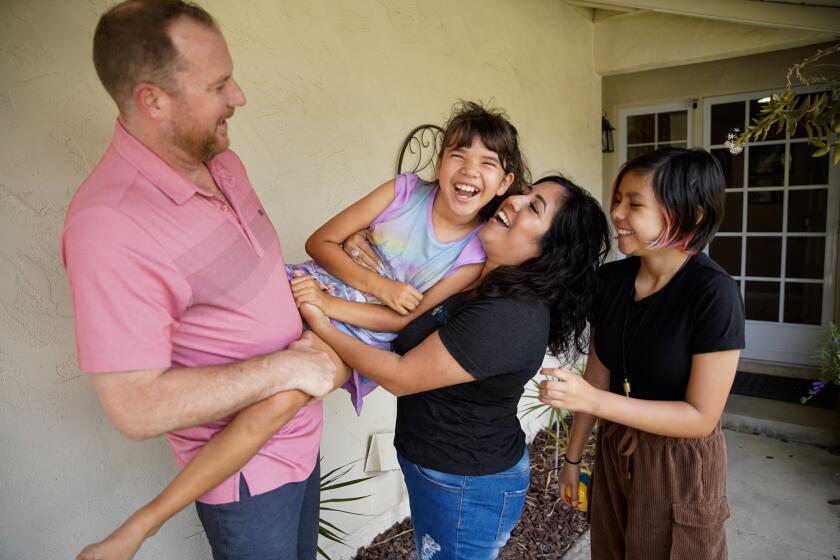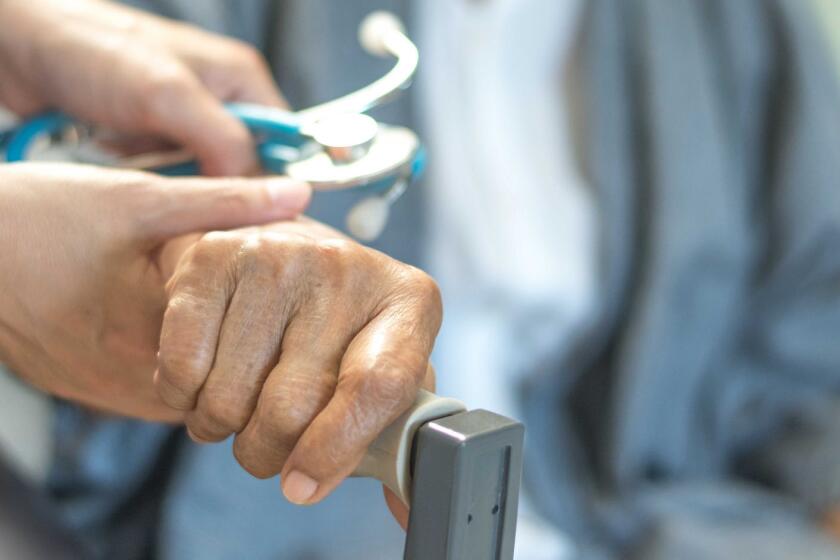Genetic sequencing helps Fallbrook toddler defy odds
On stage at a genetics conference Thursday, 16-month-old Sebastiana Manuel tried to snag the mic out of her mom’s hand. She shifted back and forth in her dad’s lap, alternating between excited hand-clapping and attempts to wiggle free.
It was normal toddler behavior, but also something of a miracle for this dark-haired pixie in a bright pink dress.
Sebastiana and her parents found themselves at the third annual Frontiers in Genomic Pediatric Medicine Conference in La Jolla because doctors once thought she would never walk and certainly would never be a happy, funny little kid.
Shortly after her baby was born on Dec. 6, 2016, Sebastiana began having uncontrollable and unexplained seizures, recalled her mother, Dolores Sebastian of Fallbrook.
“She would just scream and turn purple and, right after that, she would pass out,” Sebastian recalled.
The damage done by so many seizures so young usually has such a lasting effect on the brain’s internal wiring that, by the time doctors find a medication that can make the symptoms stop, the damage is done.
But Sebastiana is one of a handful of babies at Rady Children’s Hospital that has participated in a new medical investigation that uses rapid genetic sequencing to drastically reduce the amount of guesswork involved in diagnosing unexplained seizures and other mysterious symptoms. In just a few days, rather than weeks or months, sequencing found a defect in gene KCNQ2, which is known to cause seizures.
Working with the Rady Children’s Institute for Genomic Medicine, doctors were able to determine that a drug not usually used in children should be able to stop the seizures.
Rady is one of a handful of organizations able to do its own sequencing and, in close collaboration with San Diego-based sequencing powerhouse Illumina, recently set a world record for sequencing speed, decoding a pediatric patient’s whole genetic code in just 19 hours.
Sebastiana’s father, Pascual Manuel, said the day his daughter rolled over, even though her doctors said she probably never would, was unforgettable.
“Now she’s getting ready to crawl, and I see her feet are getting stronger. There are a lot of stubborn people in my family, and I think that stubborn streak is a good thing for her,” Manuel said.
It’s a transformation that impressed Dr. Howard Kelfer, a pediatric neurologist at Cook Children’s Hospital in Ft. Worth, Texas, who was among the hundreds of medical and genetic experts in the audience Thursday, the second day of the three-day conference.
Unaffiliated with Rady or the other hospitals working with the genomic institute to explore rapid genetic sequencing for babies in neonatal intensive care units, Kelfer said diagnosing seizures is some of the most painful work in his field. It’s usually a trial-and-error process that involves running tests and trying different drugs in different combinations until the correct combination makes the seizures go away.
Kelfer said he has a patient, now 7 years old, who suffers daily from the damage caused by the same disorder that Sebastina has.
“My patient with that disorder is devastated. She’s in a wheelchair with home care,” he said.
The thought is, he added, that ending seizures as quickly as possible clears the way for the brain to continue growing and making critical connections between its billions of neurons that are necessary for babies to develop normally.
But the research is a little unclear, he added, on just how much damage is avoided by an earlier cessation of seizures. In this sense, Kelfer said, babies such as Sebastina are advancing medical knowledge. Her development will help understand the true lifetime effect of the early intervention provides.
“With these disorders, there is an underlying wiring diagram mishap with the brain, and that is still there,” he said. “By controlling the seizures, you’ve quieted down the situation where all of the wires were firing off at the same time, but you still haven’t put them back where they belong.”
He added that, at the moment, it’s very difficult to get health insurance companies to pay for the kind of rapid sequencing and analysis that Rady has in-house.
A big advantage of sharing patient stories like Sebastiana, he said, is showing insurance companies that genetic analysis can lead to changes in the treatment that patients’ receive. As the stories begin to pile up, they go from being interesting anecdotes to a solid evidence of medical efficacy.
“If you have enough cases, you can cross the threshold and show that, not only will this impact patient outcomes, but it saves money,” Kelfer said. “You can show that kids who would otherwise be in the hospital for weeks or months undergoing diagnostics are able to go home.”
The genomics institute recently published a study of sequencing 42 infants with unexplained symptoms. Eleven avoided significant health consequences and, looking at just six of those, early genetic diagnosis resulted in between $800,000 and $2 million in avoided health care costs.
Health Playlist


Video: Leaders urge public to help extinguish hepatitis outbreak
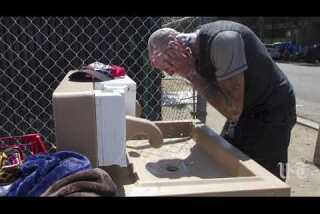
San Diego starts cleansing sidewalks, streets to combat hepatitis A

Video: Scripps to shutter its hospice service

Video: Scripps La Jolla hospitals nab top local spot in annual hospital rankings
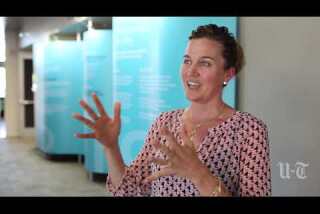
Video: Does a parent's Alzheimer's doom their children?

EpiPen recall expands

Kids can add years to your life
paul.sisson@sduniontribune.com
(619) 293-1850
Twitter: @paulsisson
Get Essential San Diego, weekday mornings
Get top headlines from the Union-Tribune in your inbox weekday mornings, including top news, local, sports, business, entertainment and opinion.
You may occasionally receive promotional content from the San Diego Union-Tribune.


